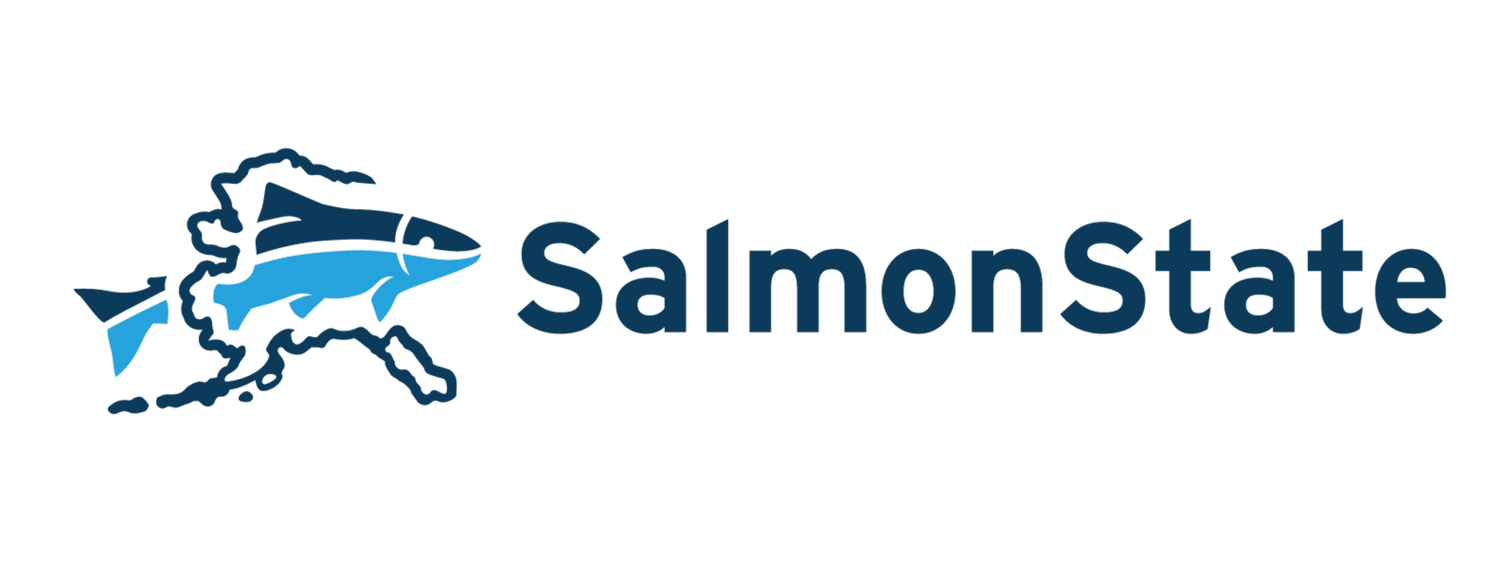The system is broken, but persistent testimony is making a difference
North Pacific Fishery Management Council moves to consider amended alternatives for managing trawlers’ chum bycatch at its December meeting
Smokehouse on the Yukon River. Photo by Jacki Cleveland
ANCHORAGE, AK— While the North Pacific Fishery Management Council did not take final action at its February special meeting to institute a cap on the Bering Sea pollock trawl fleet’s bycatch of chum salmon, SalmonState is encouraged by the depth, knowledge and importance of the testimony from western and Yukon River Alaskans experiencing devastating chum salmon declines, advocacy for Indigenous inclusion in the decision-making process, and a more respectful tenor to the meetings than there has been in years past.
“While I wish the Council had been able to institute a meaningful cap on chum bycatch today, I believe this is the best solution the broken system afforded them, and I am leaving this meeting feeling hopeful,” said SalmonState Ocean Justice Program Coordinator Jackie Arnaciar Boyer. “Council members were more responsive to and welcoming towards Indigenous peoples and Elders who flew in to testify. I am hopeful that this attitude will carry forward at the December Council meeting, and meaningful action will be the result.”
“The process is structurally flawed and we are now looking to Rep. Nick Begich to follow up on campaign promises and introduce legislation that will fix these flaws,” Boyer continued. “Testimony and the Council’s limited actions made it clear that this Council and federal fisheries process needs to be updated, including but not limited to the inclusion of at least two designated Tribal voting seats.”
At least 185 people testified publicly during the Council meeting itself (not including the Advisory Panel, or AP, beforehand.) Much of it was incredibly impactful. It is available via the Council’s YouTube channel. While hundreds of Indigenous people attended the meeting, there is no Indigenous representative on the Council.
By the end of today’s meeting the Council had tweaked some of the alternatives under consideration, and is now sending the analysis on to the National Marine Fisheries Service for publication of the Draft EIS for public review and comment. Among the changes they made were lowering a considered bycatch cap in some salmon corridors to 50,000 chum salmon; shortening the time frame by which they’ll take action; and broadening the overall range of alternatives.
The Council has not indicated support of a particular alternative at this time.
Background:
On average, trawlers off Alaska's coast bycatch a documented 141 million pounds of marine life each year. This bycatch includes king salmon, chum salmon, halibut, herring, squid, crab, whales and more.
Trawlers trail nets the size of football fields to catch everything in the water column. When they drag the bottom, they rip up seafloor habitat and crush bottom-dwelling species in a way that never comes up to the surface to be counted. Pelagic, or “midwater” trawlers, are allowed to trawl in protected areas and drag the bottom up to 100% of the time.
From 2014 to 2023, Alaska trawlers bycaught (caught and then largely discarded) more than 300,000 chum salmon each year on average. Meanwhile, Western Alaska communities, traditional chum salmon fishermen, small boat commercial fishermen, and everyday Alaskans have been experiencing chum salmon restrictions and shutdowns, with Yukon River fall chum 97% below its historical average.
In 2024, trawlers bycaught 38,751 Chinook salmon; 48,643 chum salmon; 4.5 million pounds of halibut; 3 million pounds of herring; 950,680 crabs; and one orca.
Important Bering Sea chum bycatch numbers can be found in this fact sheet from Oceana.

